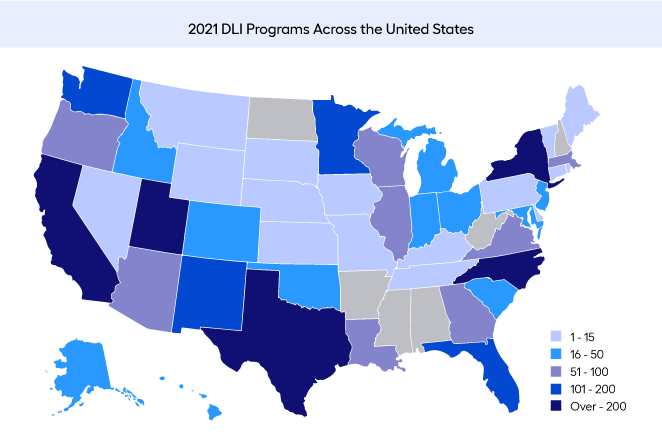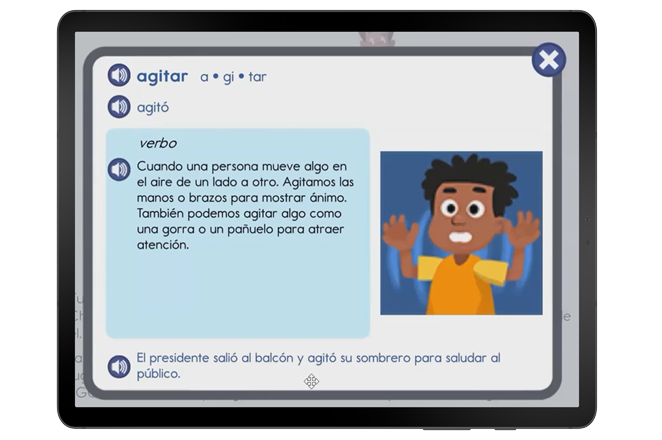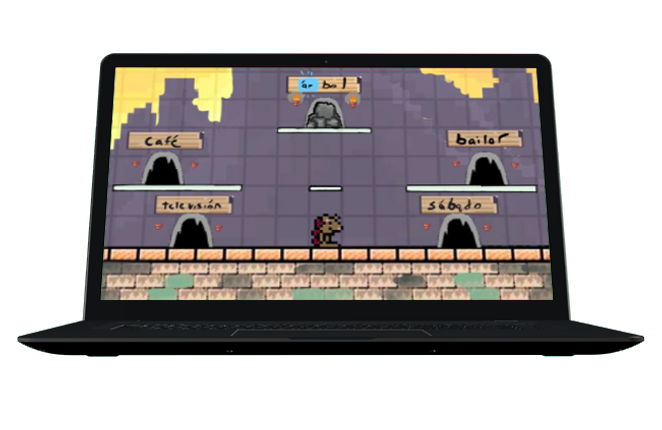August 8, 2022 8:00 am
Multilingual Learners: Designing for Meaningful Interaction
Empower language learners to participate in classroom discussions with opportunities for observation and an environment that welcomes mistakes.
My teaching assignment in my first year was primarily English language learners from newcomer to almost reclassified in both EL-specific and ELA classes. As an idealistic new teacher having just read all the books and soaked up all that my student teaching had to offer, I thought that if I supplied them with the words, via labels and sentence frames, my students would have what they needed to participate in the lively classroom discussions I envisioned. I quickly learned that was not the case.
The first time I asked my students an open-ended question, I was met with a silence so enduring that the touted “7-second pause” wasn’t nearly enough. Rewording my question didn’t change the response either. Perplexed and frustrated, I continued with our beginning-of-the-year activities. It wasn’t until later, when I had more success with eliciting answers, that I realized my students didn’t feel safe speaking up yet. That’s because research shows “if English language learners (ELLs) are going to productively engage in classroom discourse and express their thinking related to content learning goals, teachers must create a trusting classroom culture in which students feel that whatever level of language they can produce, their contributions will be valued by their teacher and peers and will never be subject to ridicule, sanctions, or negative comparisons.” While this research (and my experience) speaks to English language learners specifically, we can also apply the recommendations to dual language programs — where every student is a language learner.
“If English language learners (ELLs) are going to productively engage in classroom discourse and express their thinking related to content learning goals, teachers must create a trusting classroom culture in which students feel that whatever level of language they can produce, their contributions will be valued by their teacher and peers and will never be subject to ridicule, sanctions, or negative comparisons.”
I hadn’t yet proven to them that our classroom met these criteria. It took many cheesy icebreakers, games, and showing time and time again that mistakes were a welcome part of learning to establish our room as a safe space. But despite the comfort we felt together and what I believed were thought-provoking questions, the room was still mostly silent (or off topic) during small-group academic discussions. What was I missing?
I decided to go back to the basics because it seemed logical that before they’re comfortable participating in academic discussions, students need to feel confident in basic communication in the classroom. I decided to try a few things.
Labeling the room
As a high school teacher, this felt a little weird to me. But I grabbed a permanent marker and index cards and labeled everything I could think of around the classroom. Whiteboard, computer, pencil sharpener – you name it, it got a label. At first, my students thought it was strange too, but then it just became part of our classroom.
The students who didn’t need them didn’t really pay attention to them after the initial wonderment, but I soon noticed students referencing the labels when asking me a question or talking to classmates. While primarily useful linguistically for my EL students, the mere existence of the labels continued my work of normalizing the various language acquisition levels within our class and maintaining an environment where anyone could get the help they needed without feeling embarrassed.
Supplying sentence frames – or “formulaic expressions”
The next level up from labeling the room, I started including what I called sentence frames with my discussion questions. Walqui and Heritage call these “formulaic expressions” because they “help start or link ideas and can be used in many situations,” whereas sentence frames are more specific and often lead to a single correct answer.
Where the labels around the room were used almost exclusively by ELs, I quickly noticed that most (if not all) of my students used the formulaic expressions. Academic discourse doesn’t come naturally, native English speaker or not, so having the language to frame their ideas helped students feel more confident. They could then use these phrases, like “One example from the text is…” or “I agree with what ____ said about…” in other classes or sometimes even their writing.
Turning on the closed captions
This might be controversial, but I think movies can be legitimate language-learning tools. Before I lose all ethos as you picture me popping on a movie for my students every day in the name of “learning,” this statement comes with two caveats: first, we watch movies sparingly (and not all in one sitting); second, the closed captions must be on – in English (or whichever language students are learning).
My newcomer students hated that last bit, but I never gave in to their pleas to change the language to Spanish (the majority native language in my class). While watching a movie in English was pretty far out of their comfort zones, being able to both hear and read the words not only improved their comprehension of the movie but helped supply them with real-life examples of conversation.
——————————–
At this point I felt like I had established a safe learning environment and provided my students with the language scaffolds they needed. So why were we still struggling with academic discussions? What was still missing?
Low-stakes opportunities for discussion
Even though we had a classroom culture where mistakes were welcomed and I reiterated that academic discussions should still feel like regular conversations, students naturally became nervous and stiff when it came time to discuss. EL students in particular would be noticeably more reserved.
Knowing that “by some estimates, ELLs spend less than 2 percent of their school day in oral interaction,” I was determined to get my students speaking. That’s when I started doing something almost painfully simple. After our daily independent reading time, I would say, “turn to your partner and tell them what’s happening in your book right now.” These casual conversations didn’t feel academic to students and got them speaking – to the point where I usually had to cut them off.

Modeling (fishbowl discussion)
To bring the level of comfort they showed when talking about their books to the more “high stakes” types of conversations, I turned to a tried-and-true method: modeling. I found, especially for language learners, that seeing and hearing a model almost always resulted in more plentiful and confident interactions. In fact, if I didn’t provide an example for an activity, they always asked for one.
So, to model a discussion, I wrote two scripts – one not-so-fruitful discussion and one more substantive. Student volunteers sat in the middle of the room and acted out each discussion, leaving time in between and afterwards to talk about the differences between the two. I was amazed at how observant the students were. Together, we listed what could improve in the first conversation and the qualities that made the second more effective.
Opportunities to evaluate (discussion tracking)
While the fishbowl model demonstrated that my students could identify the ideal characteristics of an academic discussion, it still had only minor effects on their own. That’s when I decided to turn their small-group discussions into mini fishbowls.
I created a small checklist of the effective discussion “moves” that we identified in our whole-group fishbowl activity – asking a question, incorporating evidence, etc.— plus formulaic expressions they might use. Everyone got a checklist, but only half the students were speaking participants in the discussions that day. The other half were sitting on the outside of the group, listening to one specific person and keeping track of their participation.
Having the opportunity to observe a real discussion before participating was equal parts eye-opening and comforting for my EL students. Then, they were able to follow along on the checklist with sentence starters when it was their turn to participate. Our classroom culture where students felt safe making mistakes was key as they were able to hold each other accountable for the checklist without judgment.
It certainly wasn’t perfect. At one point I even incorporated a whole-class fishbowl version of the discussion tracking so that we could go over the dos and don’ts of each role. But academic discussions, and ensuring everyone benefited from them, became another aspect of our classroom dynamic that was always a work in progress. Ultimately, increasing the amount of time ELs spend interacting in the classroom is not just about giving them a seat at the table with the tools they might need, but about ensuring that they know their voice is valued in the room. That is truly the key that unlocks all the other strategies because students must feel safe to take the necessary risks that open the door to learning.
About the Author – Ally Jones
Ally Jones is a California credentialed educator who specialized in teaching English language learners at the secondary level. Outside of education, she is passionate about fitness, literature, and taking care of the planet for her son’s generation.



